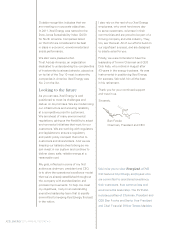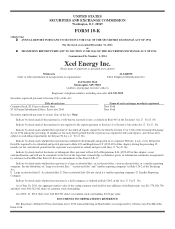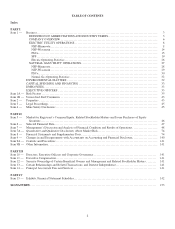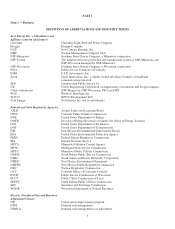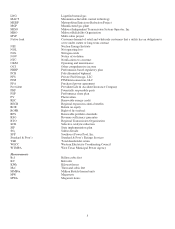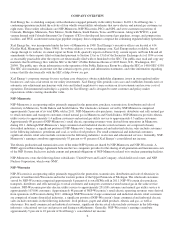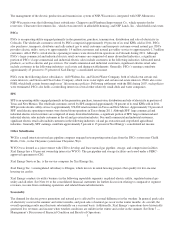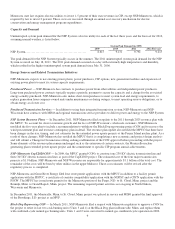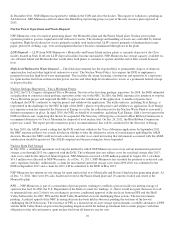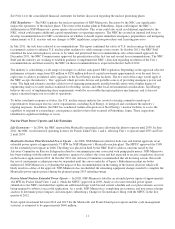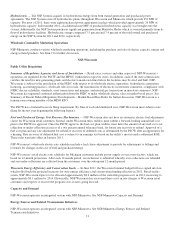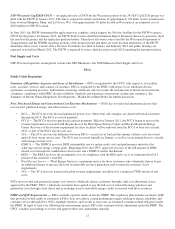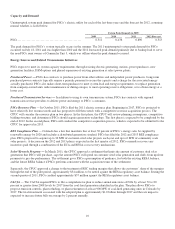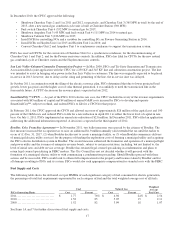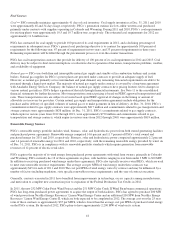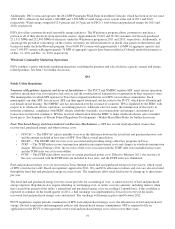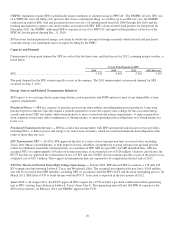Xcel Energy 2011 Annual Report Download - page 20
Download and view the complete annual report
Please find page 20 of the 2011 Xcel Energy annual report below. You can navigate through the pages in the report by either clicking on the pages listed below, or by using the keyword search tool below to find specific information within the annual report.
10
In December 2011, NSP-Minnesota requested to withdraw the CON and close the docket. The request to withdraw is pending an
ALJ decision. NSP-Minnesota will reevaluate the Black Dog repowering project as part of the next resource plan expected in
2013.
Nuclear Power Operations and Waste Disposal
NSP-Minnesota owns two nuclear generating plants: the Monticello plant and the Prairie Island plant. Nuclear power plant
operation produces gaseous, liquid and solid radioactive wastes. The discharge and handling of wastes are controlled by federal
regulation. High-level radioactive wastes primarily include used nuclear fuel. LLW consists primarily of demineralizer resins,
paper, protective clothing, rags, tools and equipment that have become contaminated through use in the plant.
LLW Disposal — LLW from NSP-Minnesota’s Monticello and Prairie Island nuclear plants is currently disposed at the Clive
facility located in Utah. If off-site LLW disposal facilities become unavailable, NSP-Minnesota has storage capacity available on-
site at Prairie Island and Monticello that would allow both plants to continue to operate until the end of their current licensed
lives.
High-Level Radioactive Waste Disposal — The federal government has the responsibility to permanently dispose of domestic
spent nuclear fuel and other high-level radioactive wastes. The Nuclear Waste Policy Act requires the DOE to implement a
program for nuclear high-level waste management. This includes the siting, licensing, construction and operation of a repository
for spent nuclear fuel from civilian nuclear power reactors and other high-level radioactive wastes at a permanent federal storage
or disposal facility.
Nuclear Geologic Repository - Yucca Mountain Project
In 2002, the U.S. Congress designated Yucca Mountain, Nevada as the first deep geologic repository. In 2008, the DOE submitted
an application to construct a deep geologic repository at this site to the NRC. In 2010, the DOE announced its intention to stop the
Yucca Mountain project and requested the NRC to approve the withdrawal of the application. A number of parties have
challenged the DOE’s authority to stop the project and withdraw the application. The utility industry, including Xcel Energy, is
represented in the challenges by the NEI. In light of the DOE’s plan to stop the project and withdraw its application, Xcel Energy
in a separate action has requested the Secretary of Energy to set the fee collection rate for the Nuclear Waste Fund to zero until a
definitive program is in place. In April 2010, the NEI, on behalf of its members, including Xcel Energy, filed a lawsuit against the
DOE in federal court, requesting that the fee be suspended. The Secretary of Energy has convened a Blue Ribbon Commission to
recommend alternatives to Yucca Mountain for disposal of used nuclear fuel. On Jan. 26, 2012, the Blue Ribbon Commission
report was issued. The report provides numerous policy recommendations that will be considered by the Secretary of Energy.
In June 2010, the ASLB issued a ruling that the DOE could not withdraw the Yucca Mountain application. In September 2011,
the NRC announced that it was evenly divided on whether to take the affirmative action of overturning or upholding the ASLB
decision. Because the NRC could not reach a decision, an order was issued instructing that information associated with the ASLB
adjudication should be preserved. The ASLB complied and the proceeding has been suspended.
Nuclear Spent Fuel Storage
In July 2011, a settlement agreement resolving the method by which NSP-Minnesota can recover certain incremental spent fuel
storage costs through 2013 was approved with the DOE. The settlement does not address costs for used fuel storage after 2013;
such costs could be the subject of future litigation. NSP-Minnesota received a $100 million payment in August 2011, of which
$14.5 million was allocated to NSP-Wisconsin. As of Dec. 31, 2011, NSP-Minnesota has recorded the payment as restricted cash
and a regulatory liability. Additionally, a claim for incremental spent fuel storage costs from 2009-2010 was submitted to the
DOE in September 2011 and a claim for 2011 will be submitted to the DOE in May 2012.
NSP-Minnesota has interim on-site storage for spent nuclear fuel at its Monticello and Prairie Island nuclear generating plants. As
of Dec. 31, 2011, there were 29 casks loaded and stored at the Prairie Island plant and 10 canisters loaded and stored at the
Monticello plant.
PFS — NSP-Minnesota is part of a consortium of private parties working to establish a private facility for interim storage of
spent nuclear fuel. In 2006, the U.S. Department of the Interior issued two findings: (1) that it would not grant the leases for rail
or intermodal sites and (2) that it was revoking its previous conditional approval of the site lease between PFS and the Skull
Valley Indian tribe. In 2007, PFS and the Skull Valley Band filed a lawsuit challenging these actions. The lawsuit remains
pending. A judicial appeal of the NRC licensing decision has been held in abeyance pending the outcome of the lawsuit
challenging the DOI decisions. The existence of PFS as a licensed out-of-state storage option remains a credible alternative if PFS
and the Skull Valley Band can prevail in the pending litigation and if the federal government fails to make progress with their
obligation to take title and remove spent nuclear fuel from all domestic reactor sites.


